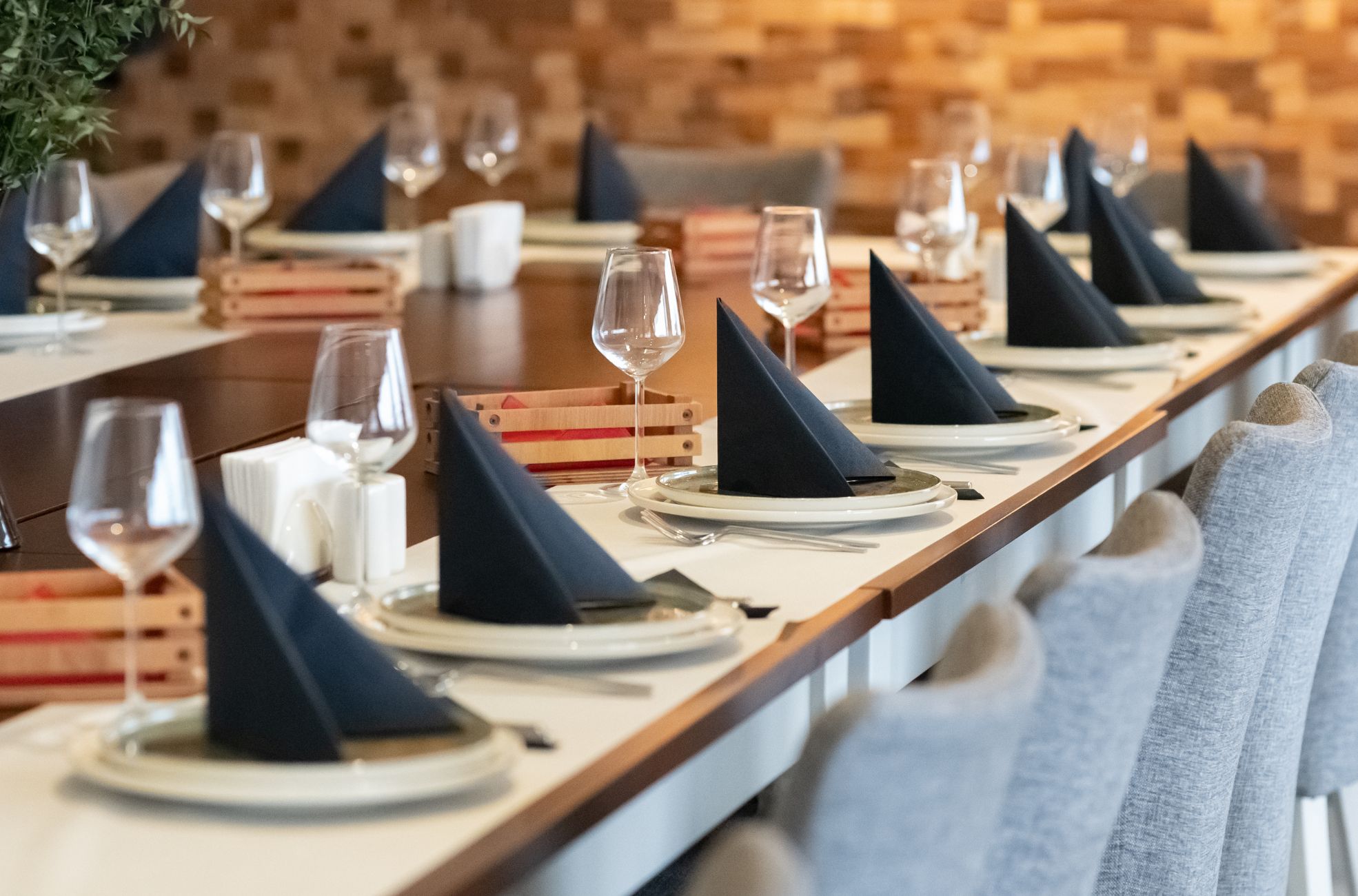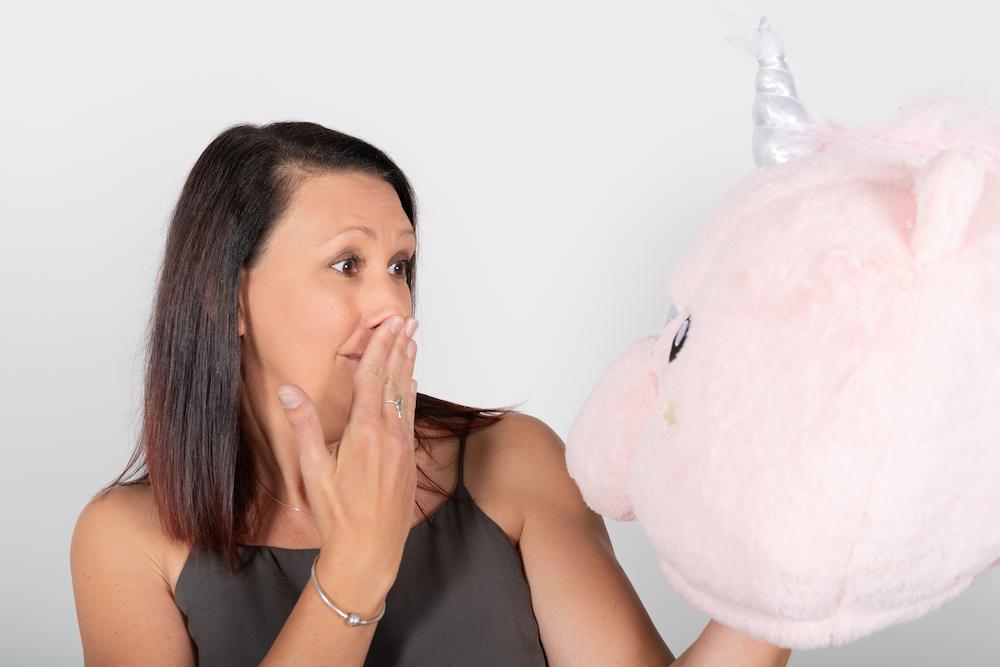Crafting an immersive atmosphere with corporate event decorations is key to the success of any professional gathering. The right decor sets the stage for the event’s theme, reinforces the brand’s identity, and enhances the overall attendee experience. We explore the multitude of factors that must be considered when adorning a corporate event—from defining the event’s purpose and aligning it with the company’s culture to the strategic use of colour schemes and the importance of budgeting.
We’ll also look at how the choice of venue shapes the decor possibilities, innovative ideas to captivate your audience, and the logistics of setup and post-event management.
Whether you’re launching a product, hosting a gala, or organising a conference, these insights will help you create an impactful and cohesive environment.
Getting Started With Corporate Event Decor
Define the Event’s Purpose and Theme
When you’re starting out with corporate event decoration, it’s key first to define the event’s purpose and pick a fitting theme. The theme acts as the event’s backbone, giving a unified message that echoes through every part, from the website to the event app. It should reflect the event’s mission or goal, making sure the core message is consistently reinforced.
A well-chosen theme helps in planning and promotion and boosts the overall experience. It makes the event memorable and builds a sense of community among attendees. Themes aren’t just for casual get-togethers; they can also bring excitement and unity to corporate events.
But remember, it’s crucial to tailor the theme to the event’s nature and the attendees’ profile. Whether they’re shareholders, VIPs, employees, or valued customers, the theme should be suitable and engaging for them.
Consider the Audience and Corporate Culture
Knowing your audience and the corporate culture is essential when planning event decorations. The decor must resonate with the attendees and mirror the company’s values and ethos. What appeals to one group might not be suitable for another, so aligning the decoration with the guests’ expectations and preferences is essential.
The venue itself can also shape the theme and, as a result, the decoration choices. It’s useful to find inspiration from various sources, like the web, past events, or the expertise of an event planner. Sub-themes can be used to link different experiences within the event, offering a layered approach to event design.
Importance of Colour Schemes and Branding
Colour schemes are crucial in setting the event’s tone and are a powerful branding tool. The strategic use of colour can establish the event’s theme, support the company’s brand identity, and create a memorable atmosphere. Colours can evoke specific emotions, with warm tones like red and orange generating excitement, while cooler tones like blue and green promote calmness.
It’s essential to pick colours that align with the event’s marketing goals and use them consistently across various touchpoints. From online graphics to swag, this consistency in colour usage not only reinforces branding but also guides attendees through the event experience. When choosing colours, consider their psychological impact and create a visual balance that feels right for both the event and its guests.
Setting Realistic Budgets for Decoration
Budgeting for decorations is a critical step in the event planning process. You need to set realistic expectations and not plan for themes or decorations that are beyond the event’s financial means. Logistical limitations should also be considered to avoid disappointment.
Consulting with industry professionals and vendors can offer valuable insights into cost-effective decoration options and help you make informed decisions. By establishing a clear budget from the start, you can ensure that the event’s decorations are both impressive and financially viable, contributing to the corporate event’s success without overspending.
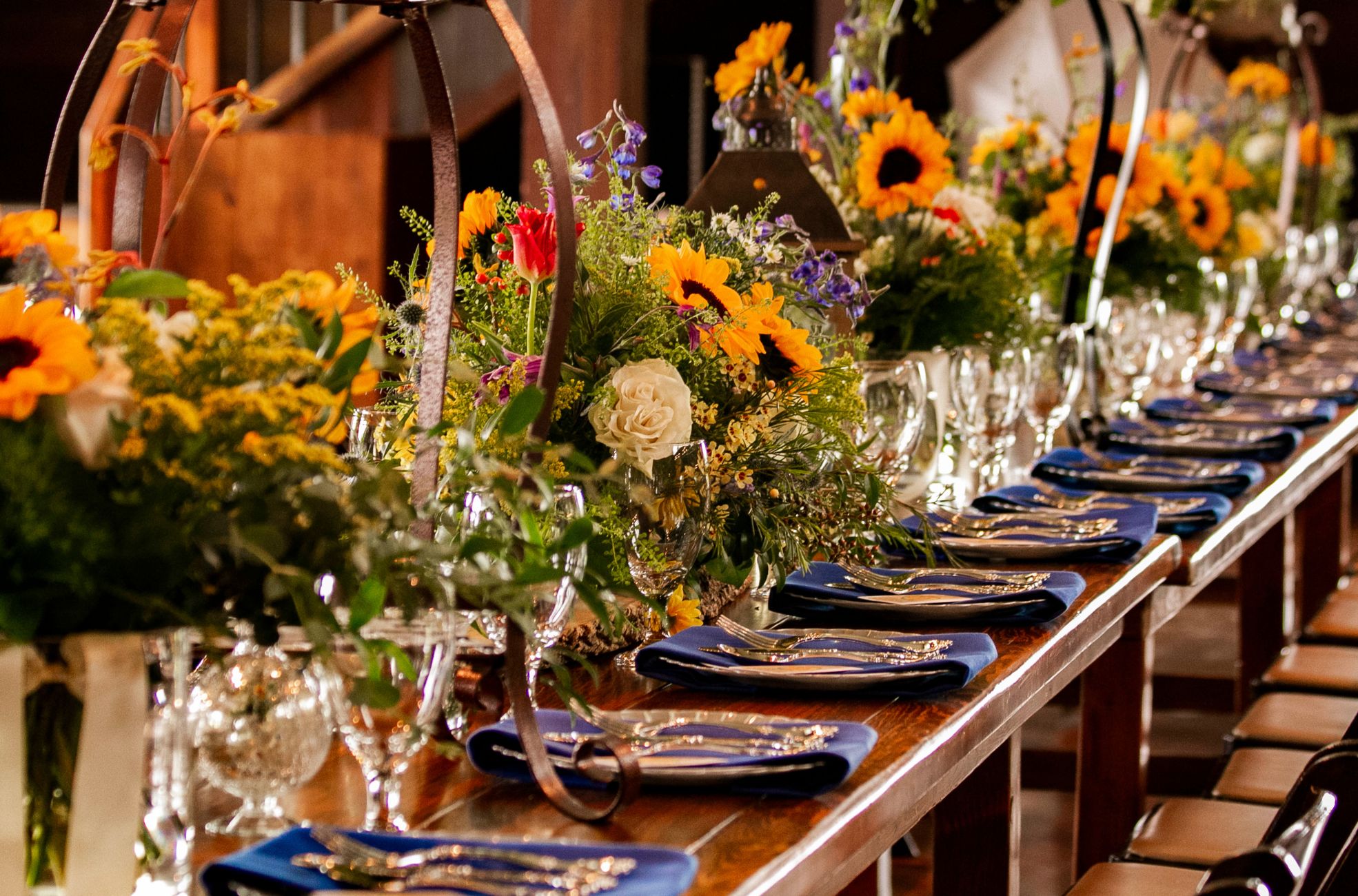
Choosing the Right Venue and Its Impact on Decor
Factors to Consider When Choosing a Venue
Selecting an appropriate venue is pivotal, as it influences the entire ambience of the event. The venue’s capacity should be appropriate for the number of attendees, ensuring comfort without feeling cavernous. The configuration should accommodate the planned activities, including spaces for networking, exhibitions, and keynote addresses.
The venue’s location should facilitate easy access and ideally be situated near transportation hubs for out-of-town guests. Consideration for those with disabilities is also paramount, ensuring the space’s inclusivity and ease of movement.
Sound quality is a critical aspect that can affect the event’s success. Venues with excellent acoustics enhance communication and engagement, so it is advisable to evaluate this aspect during the selection process. Additionally, the venue should reflect your brand, with suitable areas for branding opportunities and interactive experiences.
Culinary experiences are a key component of any event. Verify that the venue can accommodate your catering requirements, including necessary facilities and personnel. Environmental responsibility is increasingly important, so inquire about the venue’s practices regarding sustainability.
Adapting Decor to Different Types of Venues
Allow the characteristics of the venue to guide your decor planning. Utilise outdoor spaces for a relaxed atmosphere with casual seating arrangements. In contrast, indoor venues can benefit from strategic lighting and refined decor to enhance the space.
Consider how colour palettes can set the desired tone, with vibrant hues for energy or muted shades for a subdued ambience. Innovative use of space and decor, such as unique furniture arrangements or surprising decorative elements, can add interest. Look beyond the main areas and consider how overhead decor can add an element of surprise and delight.
Maximising the Venue’s Features
Leverage the venue’s attributes to enhance the event. Circular seating arrangements can foster a communal atmosphere and optimise space. Subtle lighting can add an element of elegance. At the same time, a minimalist approach can give the impression of a more expansive area.
The decor should be proportional to the venue’s dimensions, with colour choices that can either open up the space or give it a cosier feel.
Venue Layout and Flow of Traffic
A well-thought-out layout is essential for directing attendees smoothly throughout the event. Seating arrangements should accommodate all guests comfortably, with strategic placement for distinguished attendees and presenters. Designate specific pathways to manage attendees’ movement and strategically locate refreshment areas to prevent congestion.
Arrange seating to avoid interference with high-traffic zones and ensure there is ample space for guests to navigate between event segments. For events with buffet-style dining, orchestrate the flow to minimise wait times. Employ visual cues and staff assistance to facilitate orientation and seating.
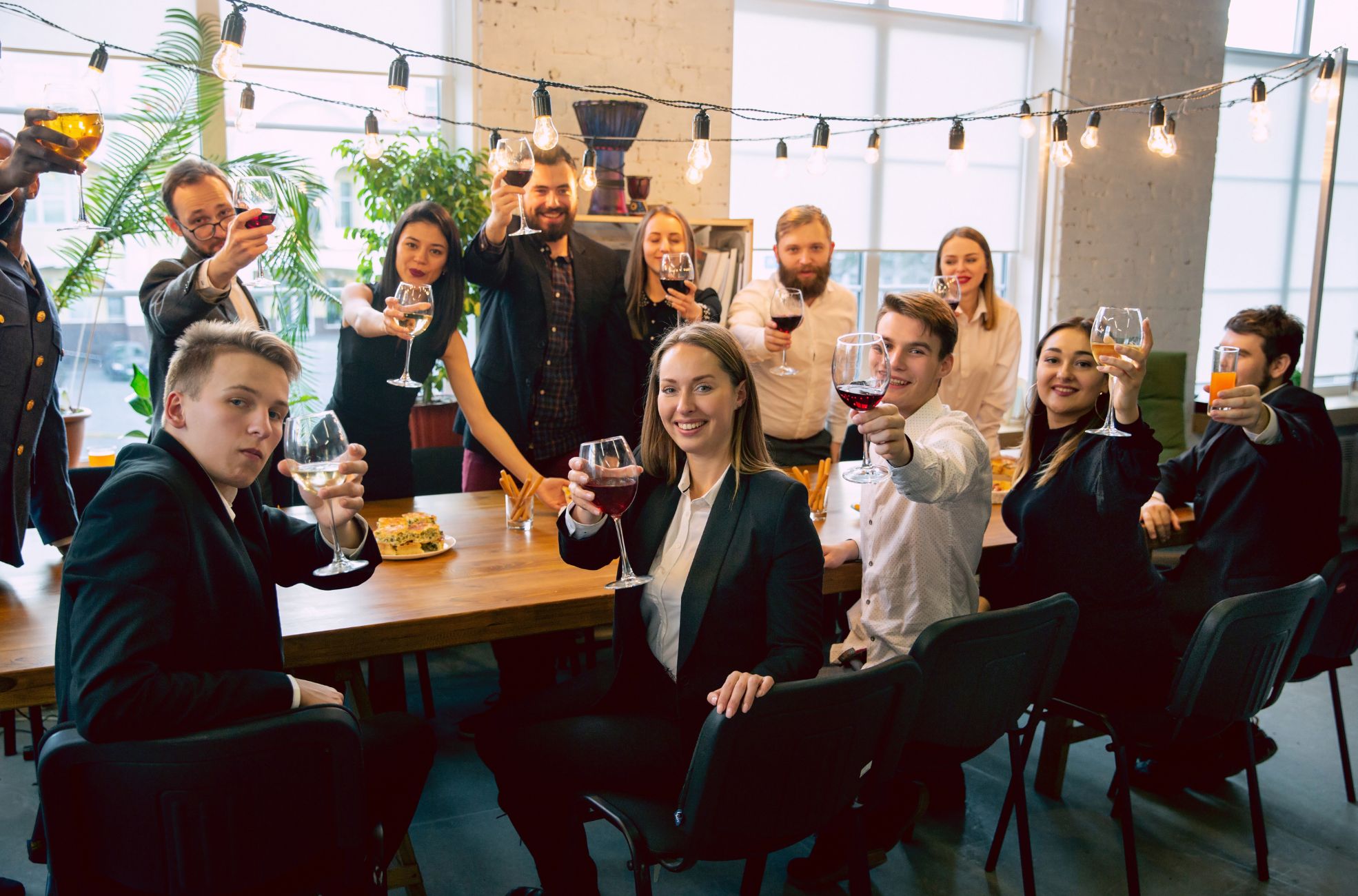
Innovative Decoration Ideas for Corporate Events
Tech-Driven Decorations: LED Displays and Digital Walls
Curved Spandex LED Signature Walls can serve as a contemporary backdrop, inviting attendees to leave messages of appreciation. LED Wall Panels can be arranged in various patterns, emitting a spectrum of hues to match the event’s theme or to highlight the company’s colours. Floors embedded with LEDs can transform a venue into an energetic and contemporary dance area, prompting guests to interact with their surroundings.
Eco-Friendly Decor Solutions
Plant walls and living centrepieces are sustainable alternatives that add aesthetic value while conveying a message of environmental stewardship. Workshops on creating handmade terrariums serve as an engaging and distinctive souvenir activity. Displays of live plants bring a natural element to the event and encourage attendees to share their experiences on social media.
Collaborating with local suppliers for decor and choosing food with a lower environmental impact are steps toward a greener event. Renting furniture and decor reduces waste and storage needs. A juice bar repurposing leftover breakfast items can help minimise food waste.
Interactive Decor Elements to Engage Attendees
Colourful paint cans or chalkboard setups can inspire guests to express themselves, creating a participatory atmosphere. Art installations, such as ‘wishing trees’ or ‘wishing walls’, enable guests to contribute to the event’s ambience: kinetic art and volumetric displays immerse guests in an engaging visual experience. Drone displays add an aerial dimension to the event, showcasing dynamic and colourful art.
These elements not only serve as decor but also as icebreakers, promoting networking.
Using Lighting for Atmosphere and Branding
Professional lighting design is crucial in creating an ambience that reflects the company’s image and the event’s goals. The strategic placement of bright lights can heighten emotions, while dimmer lighting can create a tranquil environment.
Gobo lighting can cast the company’s logo or message across the venue, making a bold visual impact. Uplighting can accentuate important areas and produce dramatic effects that align with the event’s branding.
Lighting designs incorporating music and motion elements add a lively dimension to the space. Lighting has a substantial impact on attendees’ perceptions of the brand, as it can shape their feelings and decisions. The selection of lighting should be deliberate, ensuring it supports the event’s objectives and elevates the experience. Creative lighting is crucial for distinguishing an event and making a lasting impression.
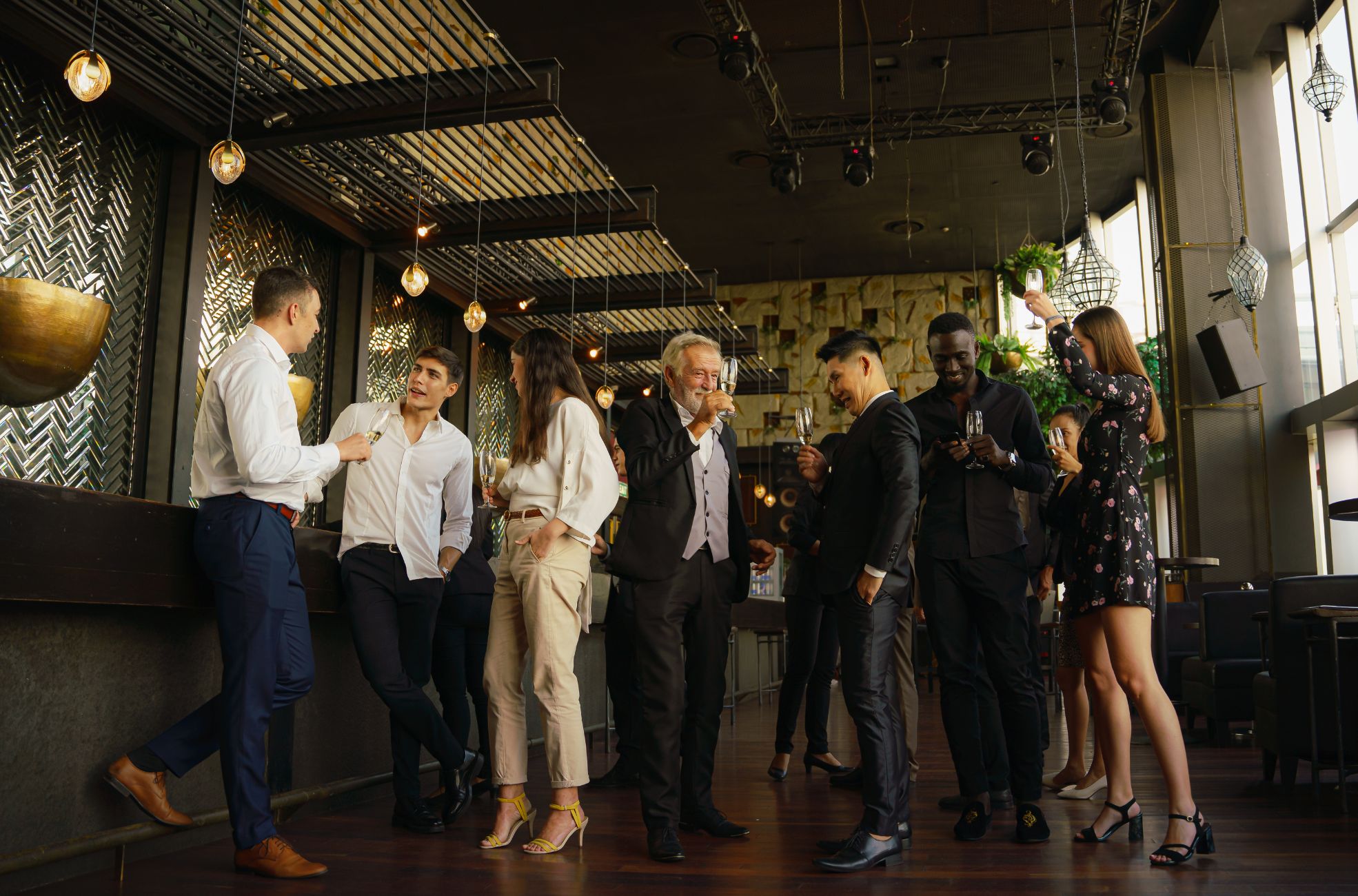
Logistics of Event Decoration Setup
Timeline for Decoration Setup and Breakdown
A detailed timeline is a roadmap that guides the entire setup and dismantling process for event decorations. It should encompass all phases, from the earliest planning stages to the post-event breakdown, ensuring no element is neglected.
This timeline includes key deadlines for securing services such as catering and entertainment. These critical points are essential to maintain to prevent subsequent delays. Including buffers after significant milestones allows for flexibility to address unexpected changes or challenges without jeopardising the event’s timeline.
Adjustments to the timeline should be made as needed to reflect the dynamic nature of event planning.
Coordination with Vendors and Teams
Collaborating with vendors and internal teams is essential for a smooth decoration setup. Early engagement with vendors facilitates a mutual understanding of the event’s requirements, which helps in refining the specifics ahead of time.
Regular interactions are crucial to ensuring that vendors align with the event’s vision and deadlines. Transparent discussions about specific needs and schedules enable vendors to provide precise estimates and services, which helps avoid extra expenses and confusion. Confirming arrangements with vendors ahead of time guarantees their preparedness and adherence to the event’s standards.
Maintaining a comprehensive log of all vendor communications can serve as a valuable tool for managing the various tasks as the event approaches.
Safety Measures and Compliance
Adhering to safety protocols is a top priority. Planners should be well-versed in the venue’s safety guidelines and ensure that all regulations are met. This includes proper signage for emergency exits and accessible routes and confirming the availability of key facilities.
Event staff should be briefed on emergency procedures, and all safety precautions should be implemented and communicated effectively. Emphasising safety not only protects participants but also upholds the integrity of the corporate host.
Contingency Planning for Last-Minute Issues
Contingency plans are essential for addressing unforeseen complications. These plans include allocating time for unplanned tasks, double-checking arrangements with vendors, and clarifying team members’ responsibilities.
Arriving ahead of schedule on the event day for setup and conducting a walk-through with the staff ensures preparedness for any situation. Having additional copies of the event plan and keeping in touch with vendors during the event facilitates prompt problem-solving. By preparing for the unexpected and having backup plans, planners can help guarantee that the event is remembered positively.
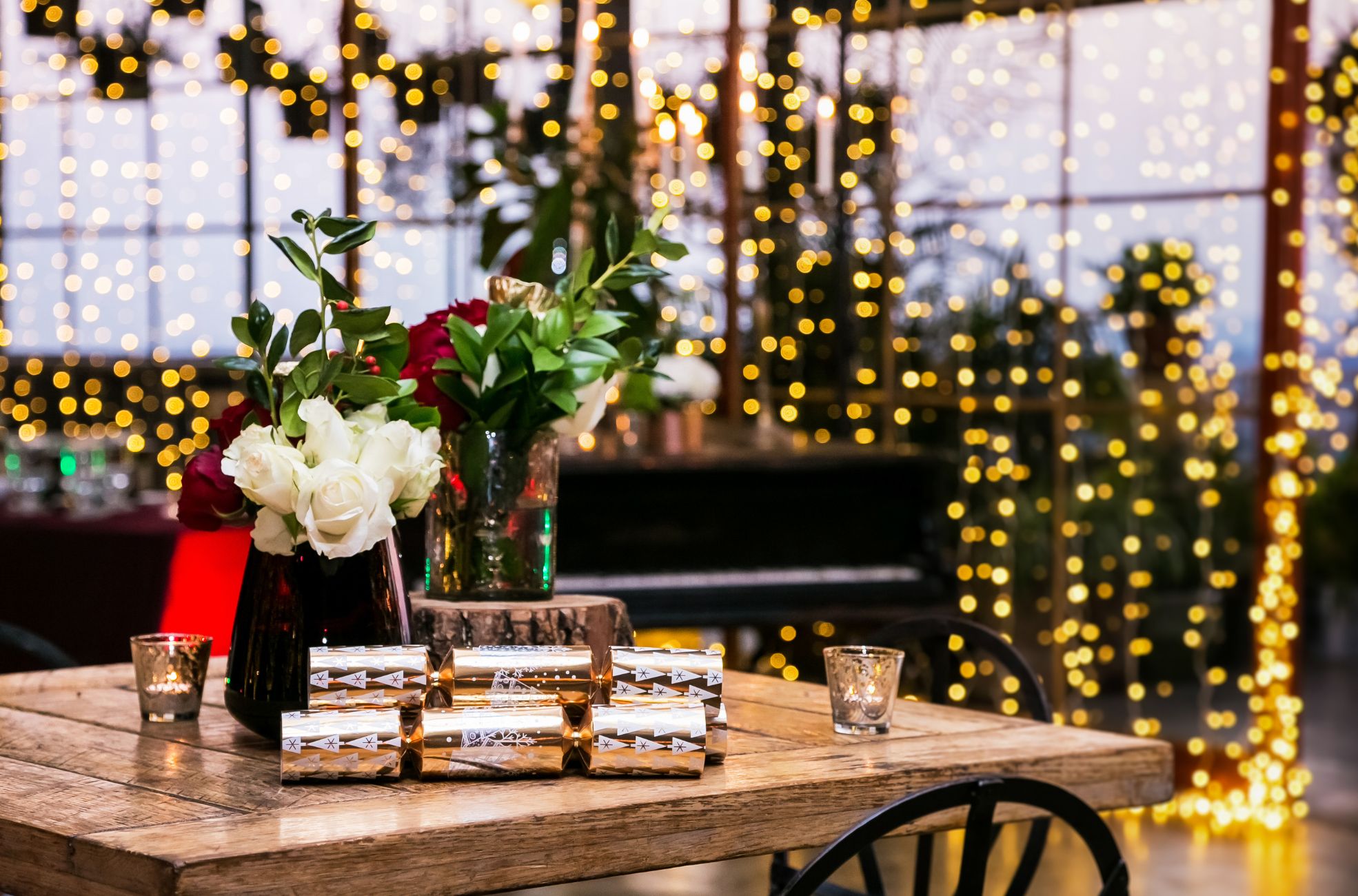
Best Practices for Post-Event Management
Efficient Decor Disassembly Techniques
The disassembly of decorations requires a methodical and careful approach to prevent damage and allow for future use. Begin with the most fragile items to avoid any mishaps. Reversing the setup sequence often means starting with the elements that were placed last. Detailed instructions for complex decorations are crucial to prevent mishaps. Utilising appropriate tools and equipment ensures both efficiency and safety.
Organised labelling and sorting of items during disassembly facilitate easier storage and inventory management later on.
Inventory Management and Storage Solutions
After decorations are dismantled, effective inventory management and appropriate storage are crucial for preserving their condition. Conducting a detailed inventory, noting the state of each item as it is packed, aids in identifying what may need attention before its next use. Select storage solutions that cater to the specific needs of the decor, with climate-controlled environments being ideal for most items.
An inventory management system, whether through specialised software or a tracking application, can streamline the tracking of decorations and their conditions, simplifying preparations for subsequent events.
Reusing and Recycling Decor Materials
Reusing and recycling decor materials is increasingly crucial for incorporating sustainability into the event’s lifecycle. Planners are encouraged to choose decorations with longevity in mind. Fabrics, for instance, can be adapted for various themes. Non-perishable items should be stored for future events, while perishable ones might be composted or given away. Exploring recycling options for non-reusable materials can contribute to environmental responsibility and cost savings.
Feedback Collection and Event Debrief
Gathering insights post-event is vital for assessing the event’s impact, including the decor’s contribution to the experience. Surveys, interviews, or digital feedback tools can capture all parties’ opinions. Inquiring about specific aspects of the decor provides clarity on what elements were successful and which need refinement.
The event team should analyse the feedback during the debrief, along with evaluating the disassembly and inventory processes. These discussions are instrumental in enhancing future event planning and execution.
Elevate Your Event Aesthetic
Crafting an environment that resonates with your corporate identity and impresses your guests is no small feat, yet undeniably rewarding. From choosing a coherent theme and colour palette that breathes life into your brand’s message to strategically managing the logistics of setup and takedown, every detail contributes to the fabric of a memorable corporate event.
Let your decor be the silent ambassador of your event’s purpose, creating a dialogue with attendees through visual splendour and engaging experiences. Remember, the best decorations are those that encapsulate your company’s ethos while sparking joy and conversation among guests.
Here’s to transforming spaces into spectacular narratives of your corporate tale.

